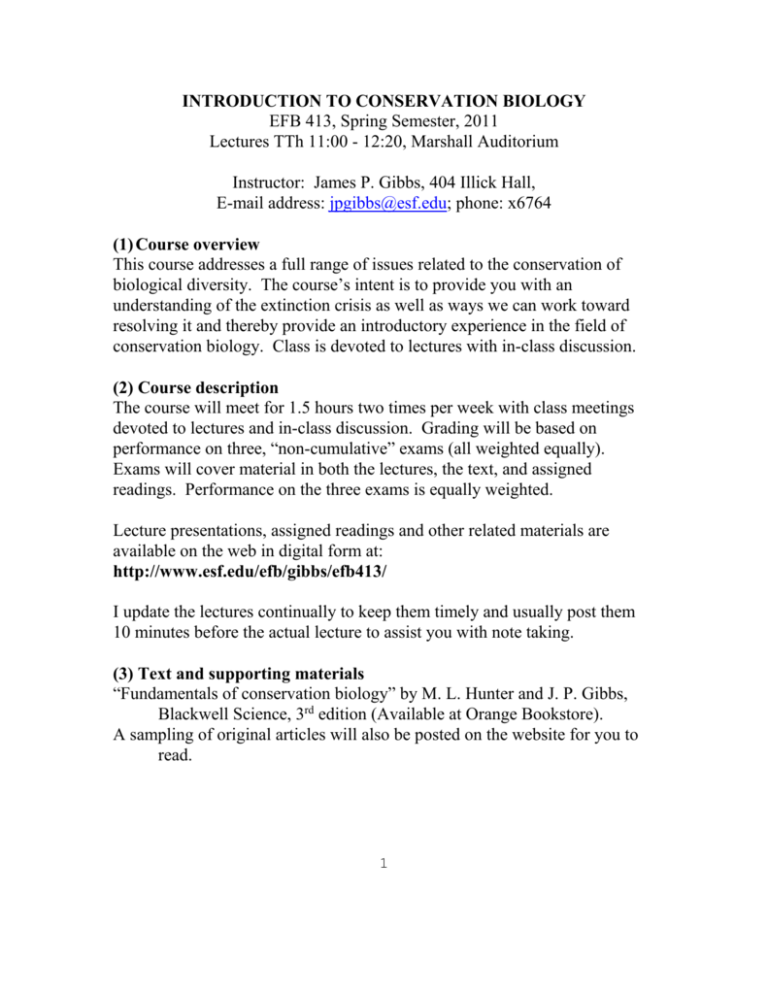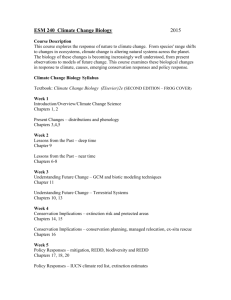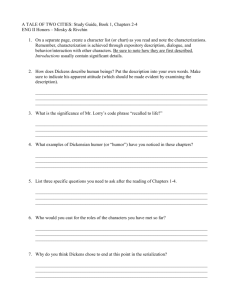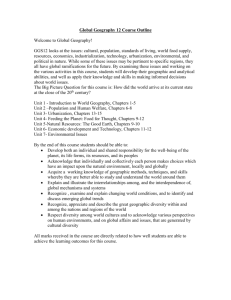INTRODUCTION TO CONSERVATION BIOLOGY
advertisement

INTRODUCTION TO CONSERVATION BIOLOGY EFB 413, Spring Semester, 2011 Lectures TTh 11:00 - 12:20, Marshall Auditorium Instructor: James P. Gibbs, 404 Illick Hall, E-mail address: jpgibbs@esf.edu; phone: x6764 (1) Course overview This course addresses a full range of issues related to the conservation of biological diversity. The course’s intent is to provide you with an understanding of the extinction crisis as well as ways we can work toward resolving it and thereby provide an introductory experience in the field of conservation biology. Class is devoted to lectures with in-class discussion. (2) Course description The course will meet for 1.5 hours two times per week with class meetings devoted to lectures and in-class discussion. Grading will be based on performance on three, “non-cumulative” exams (all weighted equally). Exams will cover material in both the lectures, the text, and assigned readings. Performance on the three exams is equally weighted. Lecture presentations, assigned readings and other related materials are available on the web in digital form at: http://www.esf.edu/efb/gibbs/efb413/ I update the lectures continually to keep them timely and usually post them 10 minutes before the actual lecture to assist you with note taking. (3) Text and supporting materials “Fundamentals of conservation biology” by M. L. Hunter and J. P. Gibbs, Blackwell Science, 3rd edition (Available at Orange Bookstore). A sampling of original articles will also be posted on the website for you to read. 1 (4) Schedule of lectures and text readings Lecture topics: Part I: Biodiversity and its importance Class introduction. What is conservation biology? What is biodiversity? The biodiversity hierarchy How many species are there? Where do they occur? Macroevolution: the source of species diversity What good is biodiversity? Exam I Part II: Threats to Biodiversity Historic extinctions: the megafauna and the island forms Current extinctions Population and consumption: interactions and inequalities Exotic species Habitat loss and fragmentation Climate change Overharvest Pollution and disease Small population phenomena Population viability analysis Exam II Part III: Maintaining biodiversity Zoos & Gardens Species reintroductions Establishing and designing protected areas Making protected areas work Part IV: The Human Factors Conservation organizations: who they are and what they do International and US-specific laws pertaining to biodiversity Envisioning the future: depicting alternative scenarios Exam III (not cumulative, likely during finals week) 2 Text readings: Chapter 1 Chapter 2, 3, 4 & 5 Chapter 2, 3, 4 & 5 Chapter 2, 3, 4 & 5 Chapter 2, 3, 4 & 5 Chapters 6, 7, 8, 9, 10 Chapters 6, 7, 8, 9, 10 Chapters 6, 7, 8, 9, 10 Chapters 6, 7, 8, 9, 10 Chapters 6, 7, 8, 9, 10 Chapters 6, 7, 8, 9, 10 Chapters 6, 7, 8, 9, 10 Chapters 6, 7, 8, 9, 10 Chapters 6, 7, 8, 9, 10 Chapters 6, 7, 8, 9, 10 Chapters 11, 12, 13, & 14 Chapters 11, 12, 13, & 14 Chapters 11, 12, 13, & 14 Chapters 11, 12, 13, & 14 Chapters 15, 16, & 17 Chapters 15, 16, & 17 Chapters 15, 16, & 17







